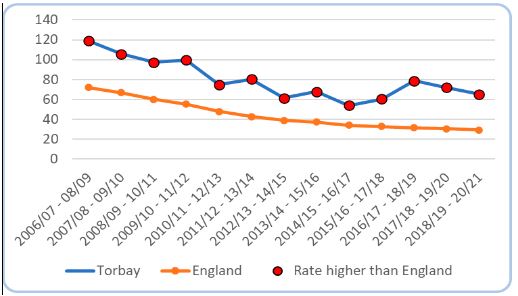Many adults assume the purpose of Drug and Alcohol Education is solely to warn children and young people away from drugs and alcohol using ‘just say ‘No’’ messaging. However, Drug and Alcohol Education in schools today is much more rounded and balanced. It focuses on harm reduction, delaying first use of recreational drugs (both legal and illegal) and alcohol, and acknowledging the essential role of drugs as medicines in the lives of many. It aims to reduce the development of harmful patterns of drug and alcohol use in later life, which may impact on aspiration, quality of life, physical health and mental wellbeing. When teaching children and young people the skills they need to make healthy, informed choices about drug and alcohol use, schools should build awareness of safety, identifying reliable information, sources of support, influences from friends, media and family, and development of attitudes to self, others and the law.
Schools are strongly discouraged from using approaches such as scare tactics, ex-users and knowledge-only approaches. These approaches have been proven to be less effective, and potentially even damaging.
Torbay context
Generally a minority of young people in Torbay have a problem with drugs or alcohol, but if they do the Checkpoint service can provide young people with specialist treatment and support. Checkpoint is an effective service in terms of providing substance misuse support due to low waiting times, and a high proportion of young people reporting positive outcomes by the end of their treatment. According to the latest figures from June 2023, there are 37 young people accessing treatment for their drug or alcohol use.
Drug misuse
Drugs are defined by the World Health Organisation as substances ‘which affect how you think, feel or behave’. This wide definition encompasses medicines, alcohol, nicotine, solvents and illegal recreational substances.
For young people in drug and alcohol treatment in Torbay, the highest reported problem substances are alcohol (77% of all in treatment), followed closely by cannabis (73%), and then ecstasy (20%).
Children and young people who have adults in their lives with substance misuse issues are more likely to go on to have substance misuse issues themselves. The statistics below show the proportion of adults with a treatment need who are parents or living with children.
- 27% of adults newly presenting for drug treatment live with children (England 15%)
- 35% are parents but not living with their children (England 18%)
- 190 children in Torbay are living with drug users
(Adult Drug Commissioning Support Pack 2023-24)
Children whose parents are misusing substances can suffer from grief and loss when estranged from their parents and can still be greatly affected when they are not living with them.
The number of children living with at least one adult with alcohol dependence in 2018-2019 was between 464 and 519 in Torbay (see table below).
Table: Estimated number of children living with at least one adult with alcohol dependence in 2018 to 2019 in England and Torbay, and rates per 1,000 of the population.

(Parents with problem alcohol and drug use: Data for England and Torbay, 2019 to 2020)
Around two thirds of young people accessing substance misuse treatment have mental health needs. Additionally, 38% of young people referred to Checkpoint in 2021-22 had been involved in self-harm prior to starting treatment.
Alcohol use
Youth drinking may cause the young person to have trouble at school or even with the law. Children who begin to drink before the age of 14 are at increased health risks including alcohol related injuries and alcohol dependency in adulthood.
While it is only a minority of people who end up in hospital after a heavy drinking session, hospital admission data shows below can be useful in highlighting some extremes in drinking behaviours amongst young people.

Chart: Admission episodes for alcohol-specific conditions under 18s, per 100,000 people.
Torbay’s young people are experiencing greater levels of alcohol related harm compared to the national average. Latest data above shows that for Torbay the rate per 100,000 young people being admitted is 72, compared to the national average rate of 31.
On a more positive note, however, the general trend for Torbay (as well as nationally) has been a downward one in number of young people being admitted to hospital for alcohol specific conditions.
Furthermore, the proportion of people who don’t drink is actually increasing in every age group apart from those ages 65 and over. This is an increasing trend, particularly in under-25s where alcohol is not a part of people’s lives. However, young adults aged 16-24 are less likely to drink than any other age group, but alcohol consumption on their heaviest day of drinking has been found to be higher than all other age groups.
Research into education delivery
Drug and Alcohol Education in isolation has a limited effect, if any. When education is delivered in the context of a holistic PSHE programme, where the school environment supports protective factors, the effectiveness is greatly increased. Pupils should receive education in a carefully sequenced programme, which presents the learning in age-appropriate segments, building on prior learning.
Learning about self-awareness, influences, resilience, healthy relationships and mental and emotional health all contribute to children and young people’s ability to make healthy, informed choices. These elements should feature strongly in any lesson plan focused on drug and alcohol use.
For Further information on good practice see Evidence Review - Effective drug and alcohol education (downloadable from the PSHE Association).